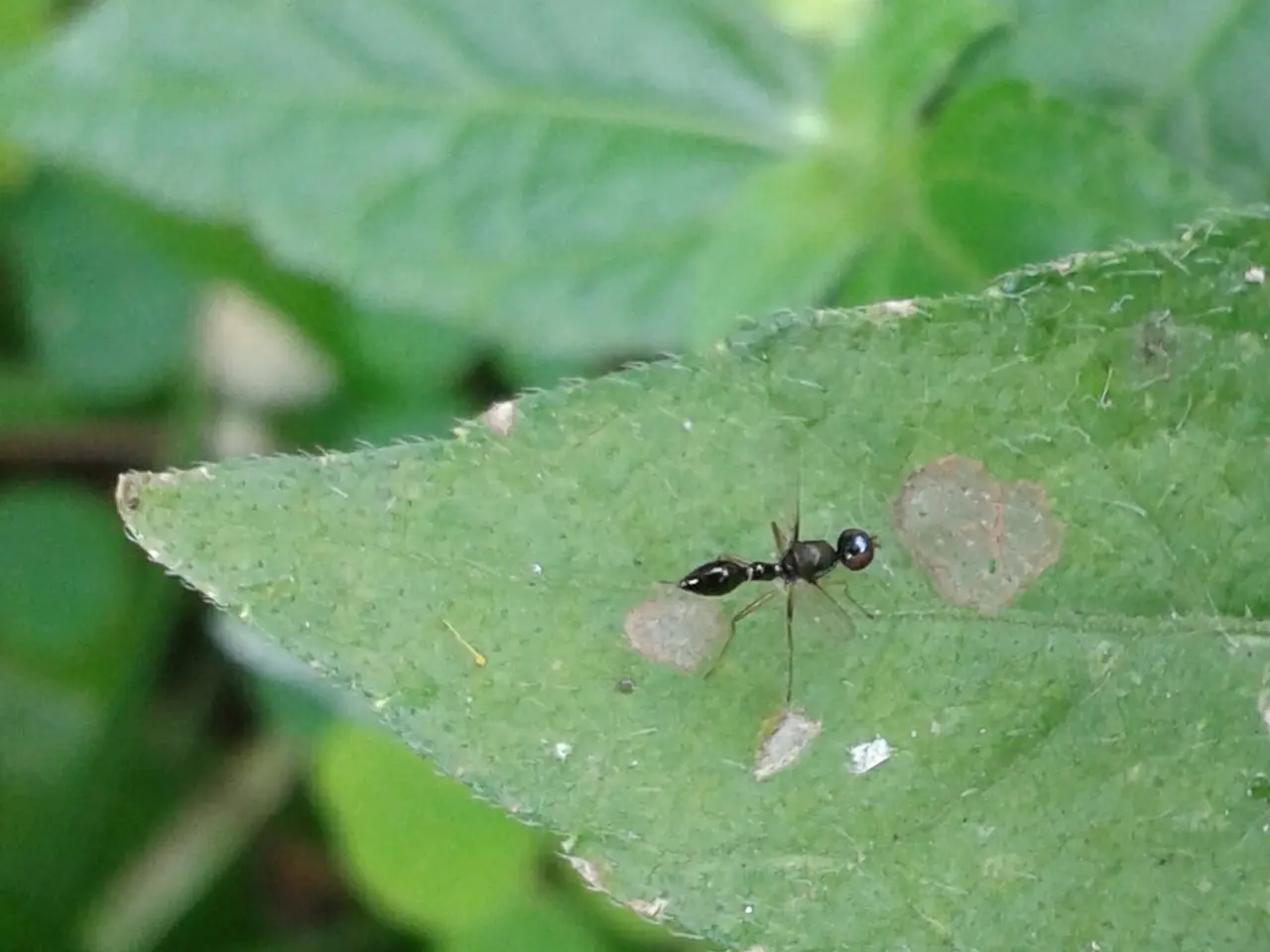Ants Recruited as protective Shield by Certain Plants through Attraction mechanisms
In the captivating world of nature, the relationship between plants and ants reveals the extraordinary lengths to which life will go to ensure survival and success. This intricate bond, known as mutualism, showcases the power of cooperation and the incredible diversity of life on our planet.
Plants and ants have developed a sophisticated co-evolution, with plants actively recruiting ants as their personal bodyguards. This partnership, often referred to as plant-ant partnerships, benefits both parties. Plants gain protection and maintenance, while ants receive food and shelter.
One of the key ways plants attract ants is by providing shelter. Some plants develop specialized structures like hollow thorns or "apartments" that serve as secure nesting sites exclusively for ants. This physical housing attracts ants to reside on or near the plant, establishing a permanent presence to defend it from herbivores and other threats.
Plants also offer food resources to ants, such as nectar from extrafloral nectaries or nutritious food bodies. This consistent reward incentivizes ants to patrol the plant actively, deterring herbivorous insects and sometimes even eliminating competing plants.
Communication between plants and ants is akin to a secret language, where each chemical cue carries a distinct message. Certain plants emit specific volatile compounds or chemical cues that attract ants to their surfaces or reproductive structures. These chemicals mediate the interaction by guiding ants to the plant locations where their protective activities are most needed.
In return, ants defend their plant hosts by biting and spraying formic acid when herbivores or threats approach. Ants also prune away competing vegetation and remove fungal spores for their plant hosts, ensuring the plant's health and growth.
The study of plant-ant interactions serves as a reminder of the wonders of nature and the potential for collaboration between species. These findings could lead to innovative approaches in agriculture, pest management, and conservation, making the study of plant-ant interactions valuable in various fields.
As habitats are threatened by human activities, protecting these mutualistic partnerships becomes even more important in conservation efforts. Understanding the delicate balance of plant-ant relationships has significant implications for conservation efforts, as preserving these interactions is crucial for maintaining biodiversity and ecosystem health.
As we continue to explore and understand these interactions, we gain a deeper appreciation for the intricate web of life that surrounds us. The relationship between plants and ants is a prime example of mutualism, where both parties benefit, offering fascinating insights into the adaptive strategies of both parties. This captivating world of plant-ant relationships could potentially uncover more secrets about nature, waiting for us to discover.
- Through co-evolution, plants have developed strategies to recruit ants as their bodyguards, offering food and shelter in return, forming a mutually beneficial relationship known as plant-ant partnerships.
- The interaction between plants and ants is facilitated by distinct chemical cues, with plants attracting ants through volatile compounds or nectar, and ants defending their hosts from herbivores and threats.
- The study of plant-ant interactions has valuable implications in various fields, such as agriculture, pest management, and environmental science, offering potential innovative solutions.
- As human activities threaten habitats, the preservation of plant-ant mutualistic partnerships becomes essential for the conservation of biodiversity and the maintenance of a healthy environment.



